Systematic position, Diagnostic and General characters, Botanical description, Floral Formula, Economic Importance - Family: Apocynaceae (milk weed family) (including Asclepiadaceae) | 11th Botany : Chapter 5 : Taxonomy and Systematic Botany
Chapter: 11th Botany : Chapter 5 : Taxonomy and Systematic Botany
Family: Apocynaceae (milk weed family) (including Asclepiadaceae)
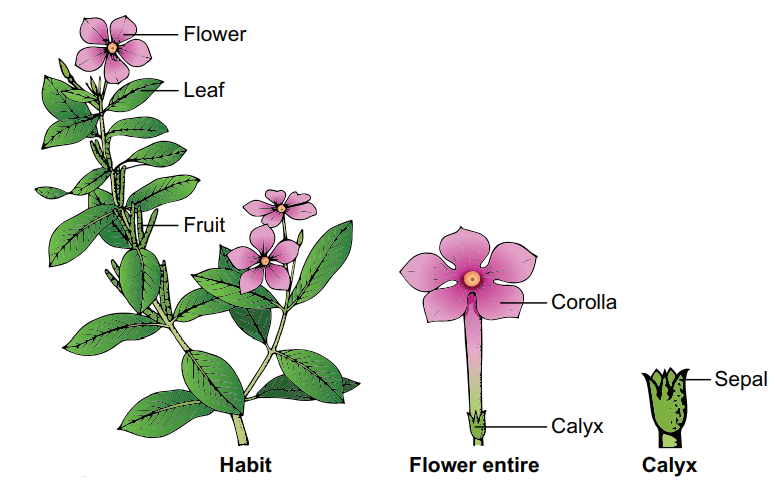
Family: Apocynaceae (milk weed family) (including
Asclepiadaceae)
Systematic position
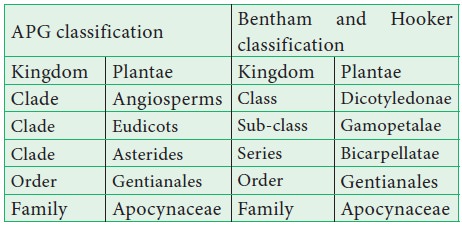
Diagnostic features
•
Plants with milky sap.
•
Leaves opposite or whorled, exstipulate.
•
Flowers pentamerous.
•
Stamens epipetalous, connate with corona.
•
Fruit a follicle.
•
Stigma is thick and massive often connate to stamen
to form Gynostegium
•
Seeds often with coma (hair).
•
Presence of nectariferous disc.
General Characters
Distribution:
This family is represented by 345 genera, 4,675
species. Mostly tropical and subtropical whereas a few species found in
temperate region.
Habit: Tree (Alstonia), shrub, (Nerium), herb (Catharanthus), woody twiner (Allamanda, Succulent, Adenium usually twining shrubs with
milky sap in laticiferous vessels.
Root: Branched
tap root system
Stem: The stems
are succulent in some taxa (Stapelia, caralluma), usually erect,
branched solid, glabrous, rarely tube like and thick.
Leaves: Simple,
undivided, sometimes reduced, exstipulate, opposite decusate (Calotropis) or sometimes alternate (Thevetia) or in whorls of 3 (Nerium),
entire, rarely stipulate (Tabernaemontana).
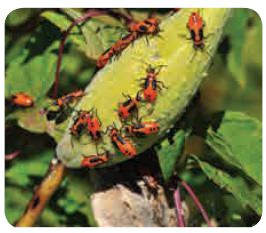
Inflorescence: A
Panicle, dichasial cyme,oftenumbelliformin(Asclepiadoids)
or raceme, or axillary cluster of two flowers each (Catharanthus).
Flowers: Bracteate,
bracteolate, pedicel-late, complete, bisexual, actinomorphic, zy-gomorphic in Ceropegia heterochlamydeous ,
pentamerous, hypogynous but rarely perigy-nous or epigynous (Plumeria).
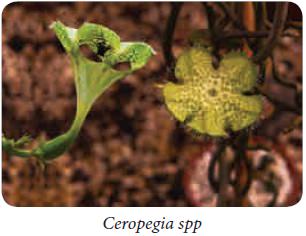
Calyx:Sepals5,synsepalous(atleastbasally) sometimes aposepalous (Catharanthus) deeply lobed ; valvate or
quincuncial (Thevetia), odd sepal
posterior, glandular appendages (Squamellae)
present on the adaxial side.
Corolla: Petals 5, sympetalous united into a tube, salver or funnel shaped; twisted or rarely valvate, often hairy within or contain some corona
like out growths at the mouth of the corolla tube.
Androecium:
Stamens 5
, alternipetalous, often
epipetalous, apostemonous to monadelphous, In Asclepiadoids the stamens are connate to the styles to form a gynostegium, pollen grains of each
theca of an anther are fused into a
waxy mass called pollinium. The
right pollinium of each anther attached
to the left pollinium of the adjacent anther by a hair like translator,
translator arms (retinacula)
attached together with the gland like structure called corpusculum. Anthers are dithecous, basifixed, often sagitate,
introse; dehisce longitudinally, anthers basally awned; sometimes bear hairy
appendages over the lobes (Nerium).
Gynoecium:
Bicarpellary,
carpels apically united, superior,
or rarely half inferior (Plumeria) 1
to 2 locule with 2 to many ovules in each locule on marginal placentation.
Style one and simple, stigma is characteristically thickened, massive and
bilobed. A nectariferous disc is often present around or at the base of the
gynoecium, (Thevetia, Catharanthus, Allamanda and Rauvolfia).
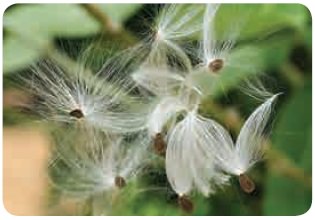
Fruit: The fruit
is variable and can be a berry (Landolphia), drupe (Cerbera) follicle (Asclepias),
capsule (Allamanda).
Seed: Seeds are
endospermous often with crown of
hairs.
![]()
![]()
![]()
Botanical
description of Catharanthus roseus
Habit: Erect
ever blooming ornamental plant with
milky latex.
Root: Branched
tap root system
Stem: Aerial,
erect, cylindrical reddish green,
glabrous and branched.
Leaves: Usually simple,
opposite decussate, exstipulate, subsessile, or petiolate, elliptic – ovate,
entire, mucronate, unicostate reticulate venation.
Inflorescence:
cymose,
axillary pairs.
Flower: Ebracteate,
Ebracteolate, subsessile, complete, bisexual, heterochlamydeous, actinomorphic,
hypogynous, pentamerous, rosy purple, white or pink.
Calyx: Sepals 5,
slightly synsepalous, green showing
valvate aestivation.
Corolla: Petals 5,
sympetalous, throat of corolla tube
hairy forming a corona, twisted (hypocrateriform).
Androecium: Stamens
5, apostemanous, epipetalous, inserted at the mouth of the corolla tube,
filaments short, anthers sagittate, dithecous, dorsifixed, introse.
Gynoecium:
Bicarpellary,
apocarpous, ovaries superior,
unilocular, ovules many, placentation marginal, style simple, stigma hour-glass
shaped. Two scaly nectaries are present one on the anterior and another on the
posterior side of the ovary.
Fruit: A pair of
elongated follicles.

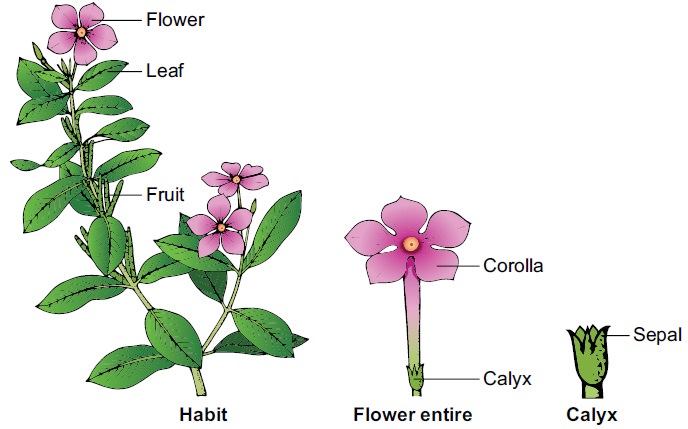
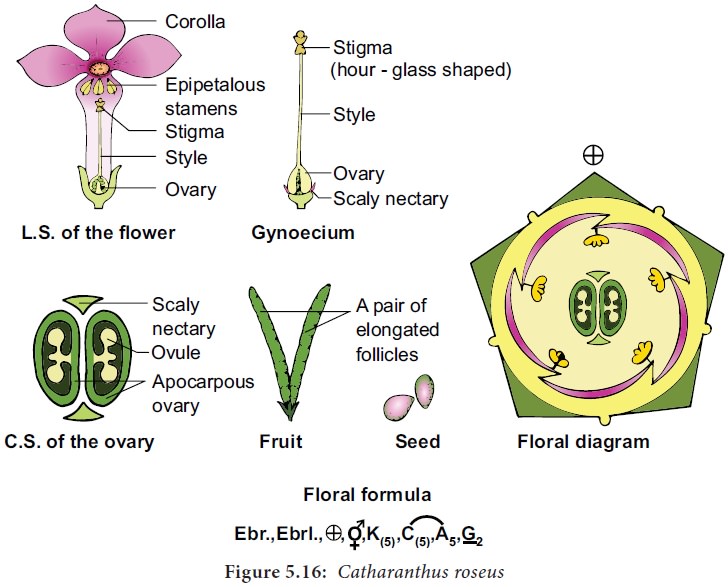
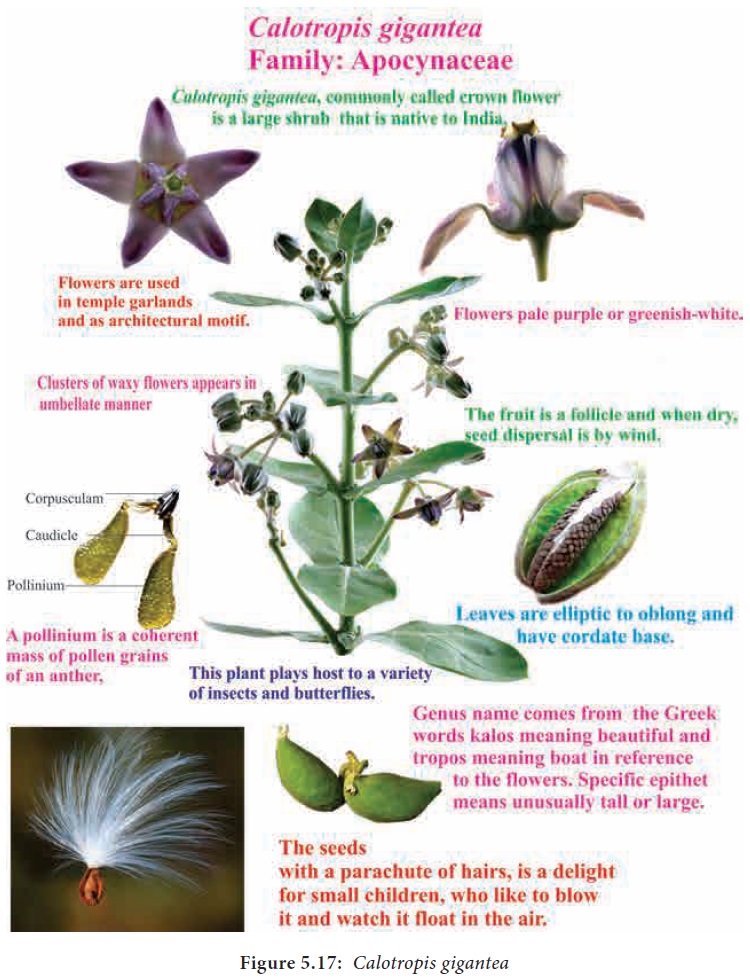
Economic importance of the family Apocynaceae
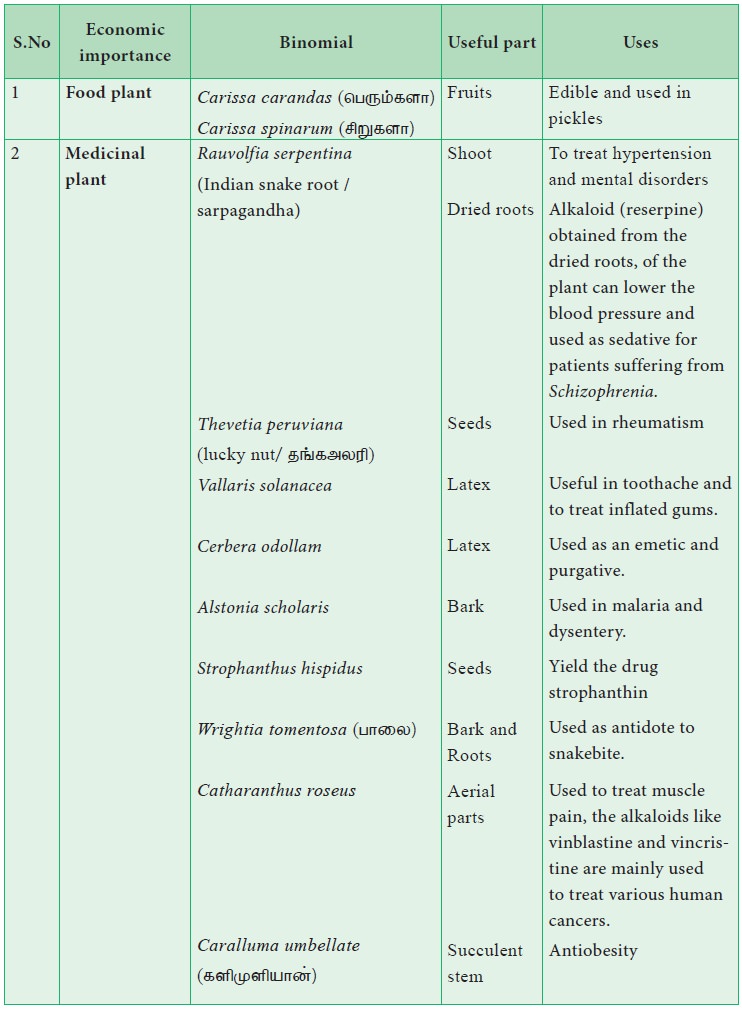
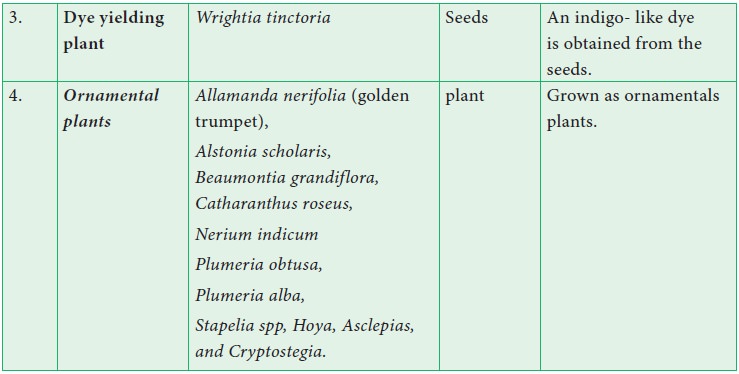
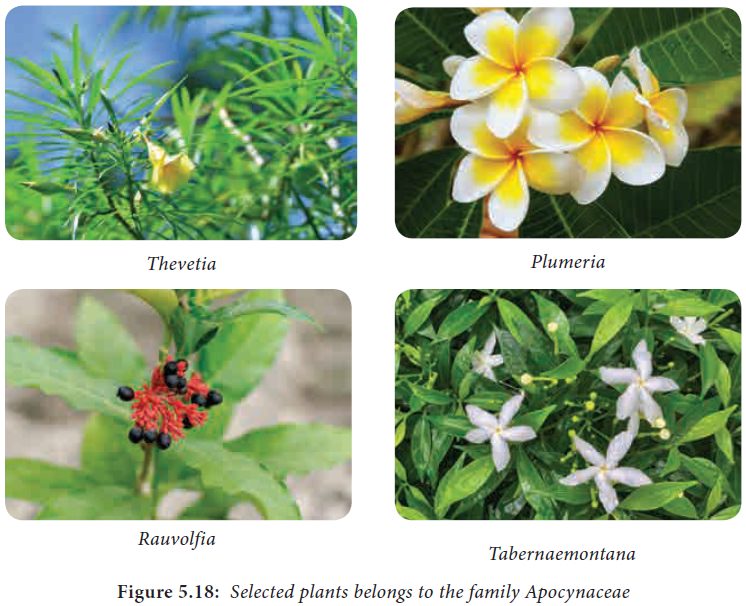
Related Topics